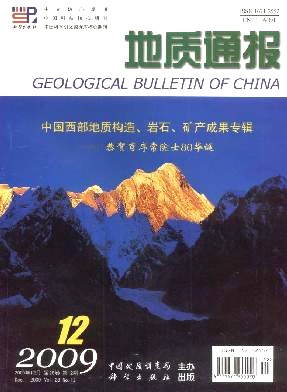ZHANG Zhao-chong, DONG Shu-yun, Huang He, MA Le-tian,ZHANG Dong-yang, ZHANG Shu, XUE Chun-ji. Geology and geochemistry of the Permian intermediate-acid intrusions in the southwestern Tianshan, Xinjiang, China: implications for petrogenesis and tectonics.[J]. Geological Bulletin of China, 2009, 28(12): 1827-1839.
| Citation: |
ZHANG Zhao-chong, DONG Shu-yun, Huang He, MA Le-tian,ZHANG Dong-yang, ZHANG Shu, XUE Chun-ji. Geology and geochemistry of the Permian intermediate-acid intrusions in the southwestern Tianshan, Xinjiang, China: implications for petrogenesis and tectonics.[J]. Geological Bulletin of China, 2009, 28(12): 1827-1839.
|
Geology and geochemistry of the Permian intermediate-acid intrusions in the southwestern Tianshan, Xinjiang, China: implications for petrogenesis and tectonics.
-
Abstract
Four typical intrusions, i.e., Yingmailai intrusion in the east part of the south Tianshan, Chuanwulu and Baleigong intrusions in the Kuokousaling regions and Mazashan intrusion in the northwest Tarim Basin, are chosen for petrological and geochemical investigations. These intrusions which come from three different regions have distinct geochemical characteristics. The Yingmailai intrusion consists of biotite granite and two-mica granite, which are characterized by high SiO2 contents, weak aluminium-oversaturated feature, high initial Sr isotopic ratios (around 0.710) and negative εNd(t) values(-4 to -6). So it can be classified into S-A transitional type. The Mazashan intrusion is alkali, and composed of syenite, which is characterized by absence of significantly negative Nb and Ta anomalies on primitive mantle normalized trace element patterns. The Chuanwulu intrusion consists predominantly of syenite and monzonite. The systematic geochemical investigations suggest that the syenite and monzonite are formed by mixing of mafic magma with felsic magma in different ratios. Comparably, the Baleigong intrusion has similar geochemical features with granite porphyrite. In combination with petrological and geochemical characteristics, we suggest that the Yingmailai intrusion in the east part of the south Tianshan was produced by partial melting of "cool" thickened crust induced by radiogenic heating, whereas the felsic rocks were formed by partial melting of thin crust in response for underplating of mantle-derived mafic magma. In contrast, the Mazashan intrusion was formed in a different tectonic setting, which can be attributed to Permian large magmatic event in the Tarim basin. Consequently, the nature of the Permian magma is controlled by the compositions and structure of crust.
-

-
-
Access History







 DownLoad:
DownLoad: